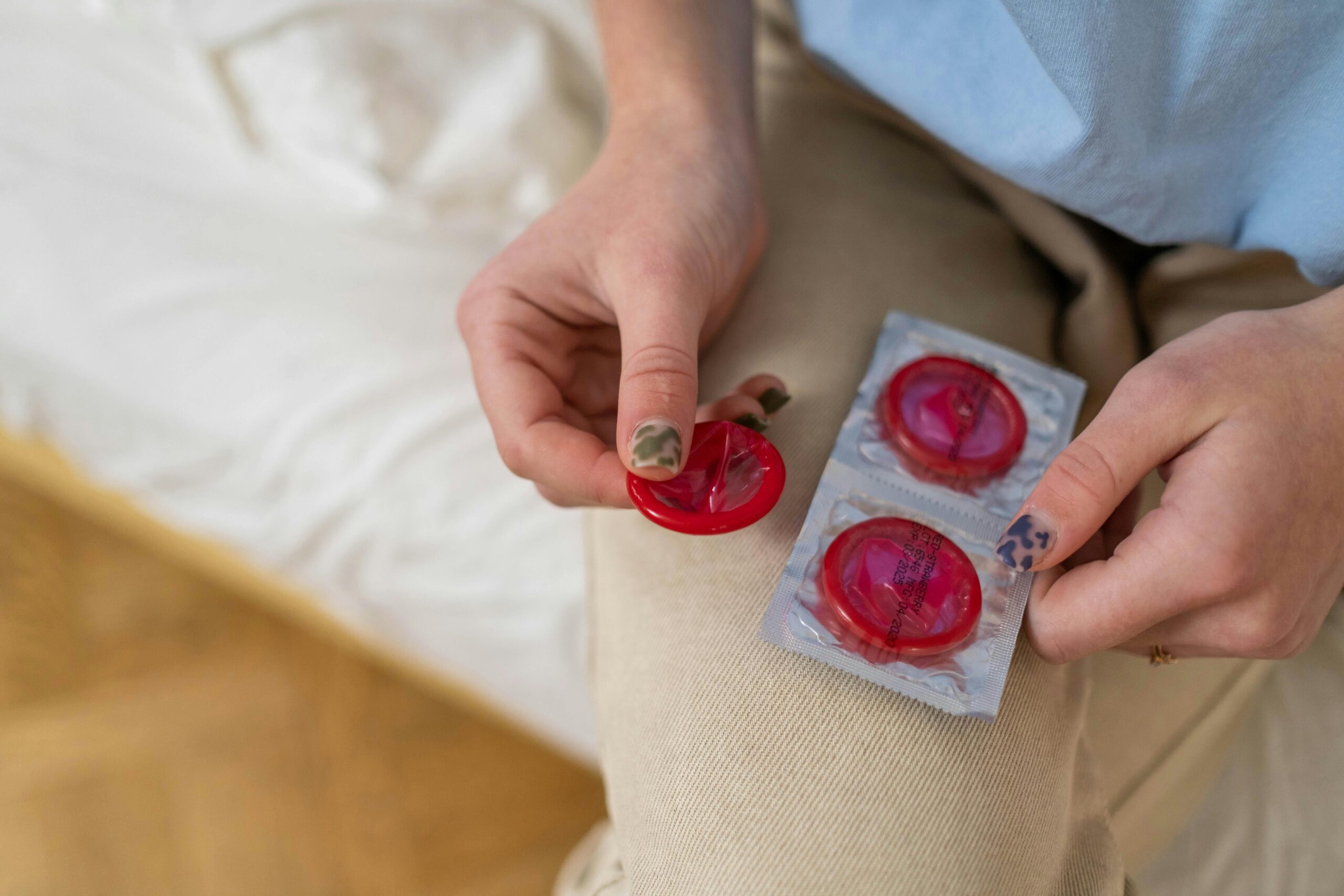Using a condom might lower your chances of getting pregnant, but it doesn’t guarantee sex without conception. In fact, every type of birth control has the potential to fail, even if you use it correctly.
The only 100% effective method of pregnancy prevention is not having sex. Still, if you do choose to sleep with a partner while using protection, there are ways to improve condom effectiveness. We’ll explain how condoms work, birth control failure rates, and how to reduce your risk of pregnancy.
How do condoms prevent pregnancy?
Male or external condoms are pouches that are worn on penises during sex. You can also find internal or female condoms that are inserted inside the vagina, but they aren’t as common. Most are made from latex, a type of rubber that is thin, durable, and elastic. If you or your partner has a latex allergy, you can also find condoms made from other materials.
When used during sex, condoms keep the man’s sperm from entering the woman’s reproductive system. Since the sperm cells are trapped within the sheath, they can’t reach and fertilize her egg, preventing pregnancy.
This type of contraceptive also provides a barrier between the partners’ skin and bodily fluids, reducing each person’s risk of spreading or contracting a sexually transmitted disease (STD) or infection (STI). Unfortunately, as with pregnancy, condoms don’t always protect you from infections. If you are sexually active, you should get tested for STIs regularly.

How effective are condoms at preventing pregnancy?
These failure rates reflect “typical use,” or the way most people use condoms. Generally, people don’t use contraceptives perfectly every time. These mistakes may be minor, but they can increase your chances of getting pregnant while using protection.
Telling even one trusted person can take some of this weight off your shoulders. It can make your circumstances clearer and help you make a decision you won’t regret.
Before sharing your pregnancy, make sure you choose the right person. Above all, this person should have you and your best interests at heart. They should never try to pressure you into making a specific choice or judge you for your situation. You may find that your partner, sister, friend, or mom is the best choice. Depending on your situation, you can also confide in a mentor, coach, or teacher.
Our patient advocates are always available to help you understand and work through your situation with compassion as well. If you need support, you can find it here.
Common reasons condoms fail
1. Using the wrong size
Condoms are available in several sizes, and it’s important to choose the correct one. If it’s too big, the condom may come off during sex. Along with allowing sperm into your vagina, a loose condom may need to be pulled out of your body, causing discomfort and embarrassment.
A condom that is too small may cause your partner discomfort and fail to contain the sperm, increasing your risk of pregnancy.
2. Breakage or tearing

Oil-based lubricants, including coconut oil or baby oil, can damage latex and cause condom breakage. Silicone-based or water-based lube is a better option.
You can also accidentally break the condom while opening the packaging. Always check for tears and holes first.
3. Incorrect usage
Condoms must be applied before penetration and removed immediately after to prevent pregnancy effectively. Never reuse condoms. Using more than one condom at the same time can also lead to failure. Finally, your partner should pinch the air out of the tip of the condom when putting it on, which helps the sperm stay inside the latex after use.
How to reduce your risk of pregnancy
Biologically, sex is designed to produce pregnancy. You can lower your risk by using condoms and birth control, but pregnancy will always be a natural result of sex, even “safe sex.” Before sleeping with a partner, it’s important to consider the potential consequences of this choice.
If you do conceive, are you ready to handle a pregnancy and the choices you will have to make for it? Do you trust your partner to support you through this journey? What are some of the challenges that might affect your options in this scenario?
To avoid an unplanned pregnancy without fail, practice abstinence until you are ready to grow your family. You will not only avoid the stress of a surprise pregnancy, but you will also be able to embrace future pregnancies with excitement and joy.
Think you’re pregnant? Get a free pregnancy test at Thrive Orlando
If you believe you might already be pregnant, the first step is to take a free medical-grade pregnancy test. If your test is positive, you may qualify for additional cost-free services, including an ultrasound, pregnancy counseling, and STI testing and treatment.
Schedule your free appointment to confirm your pregnancy today.

